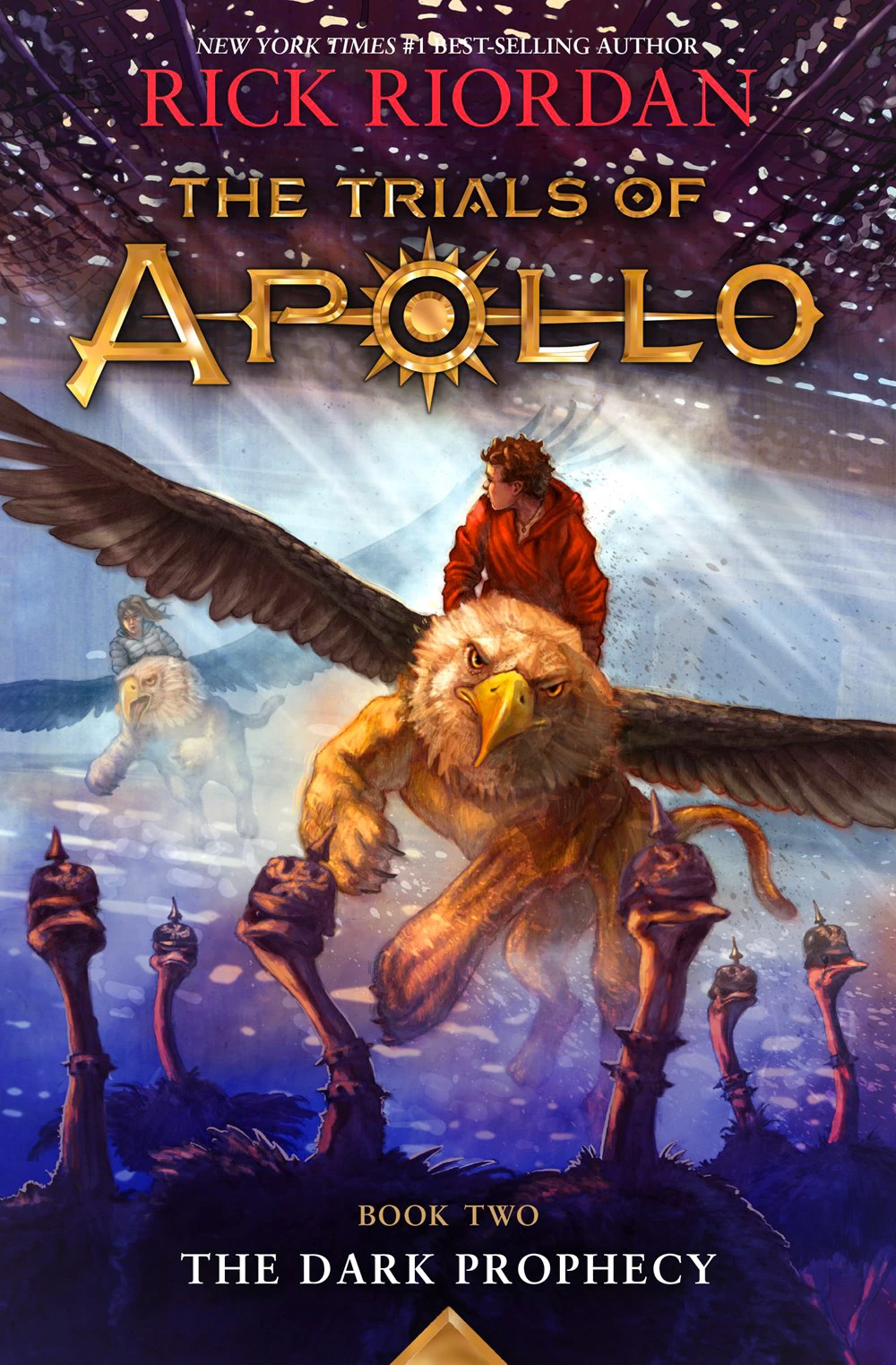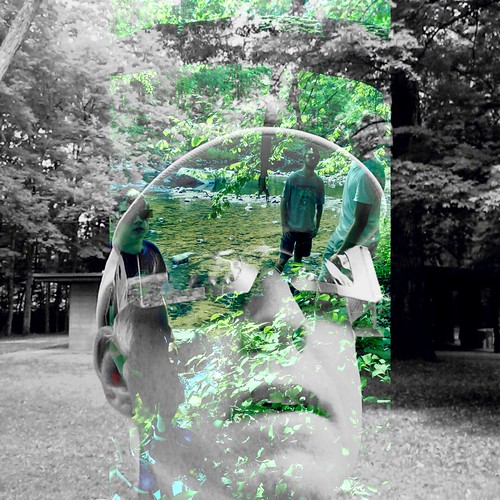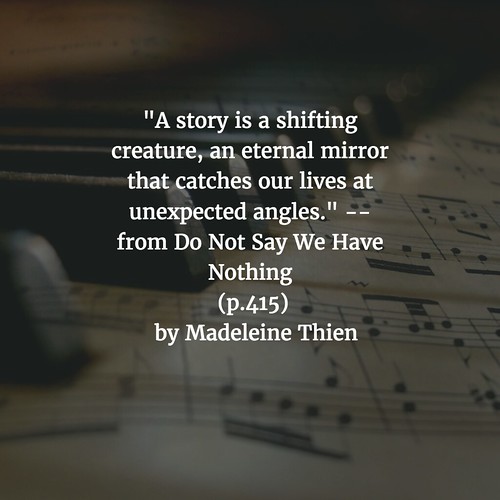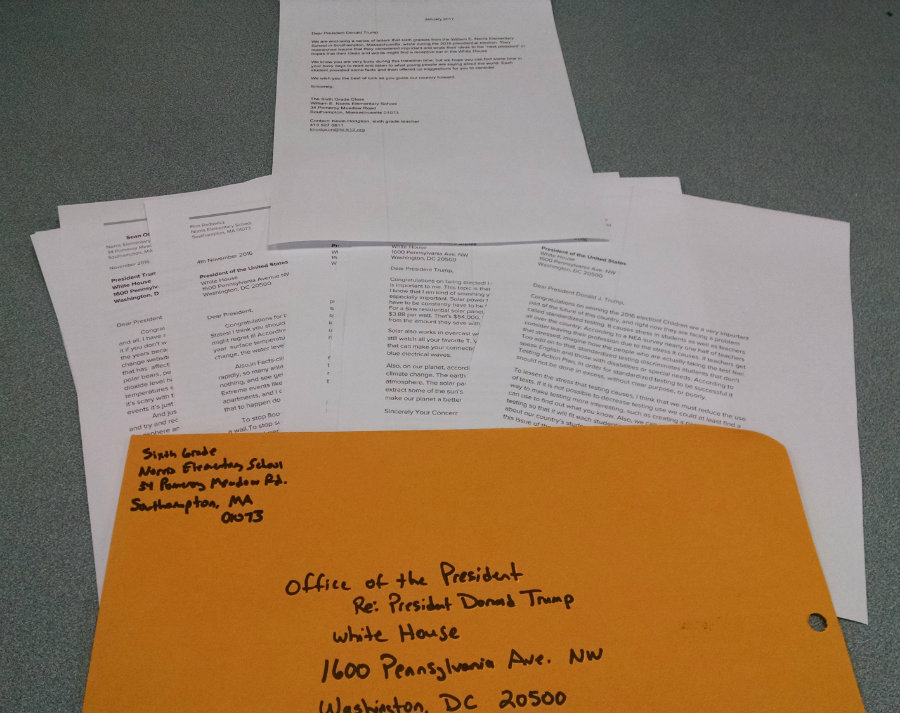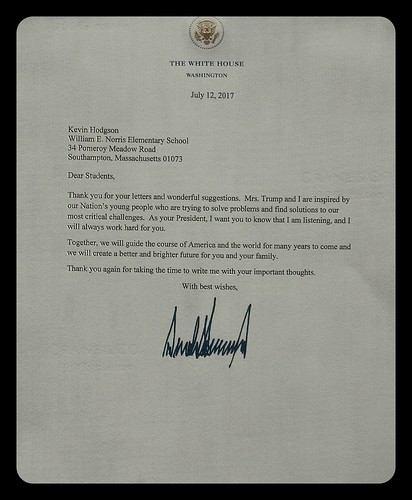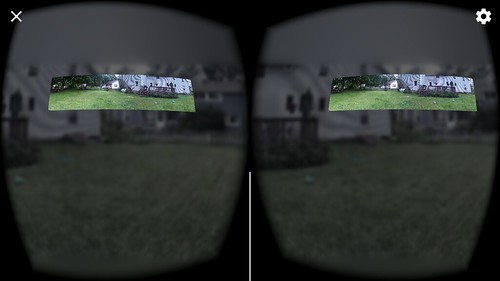
I just finished an interesting examination of digital media, technology, the Internet, and writing by Kenneth Goldsmith. The book has the evocative title of Wasting Time on the Internet, and his premise is that what seems like “wasted time” is often not wasted time after all. In fact, he argues that a whole new way of looking at writing and reading is emerging from our online interactions and creating efforts.
I’ve grabbed some quotes from the book that I think are intriguing, as a way to think about Goldsmith’s ideas (the book stems from a college course he taught by the same name).
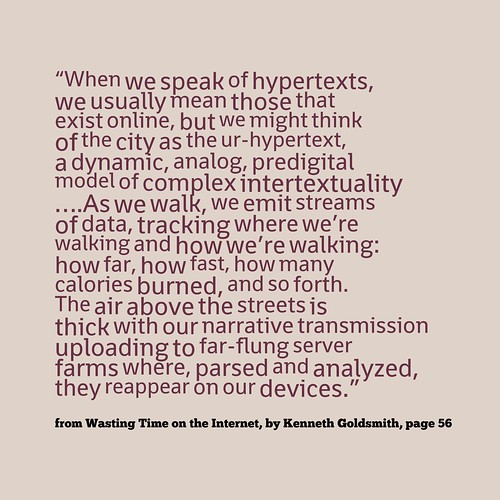 I found this concept of the cityscape as a compositional canvas interesting, particularly when we do think of how our devices give off so much of our data. That ‘story’ is rather invisible to the naked eye, but not to the companies that track us. Isn’t that a narrative shaped by data? The question is, who controls that story?
I found this concept of the cityscape as a compositional canvas interesting, particularly when we do think of how our devices give off so much of our data. That ‘story’ is rather invisible to the naked eye, but not to the companies that track us. Isn’t that a narrative shaped by data? The question is, who controls that story?
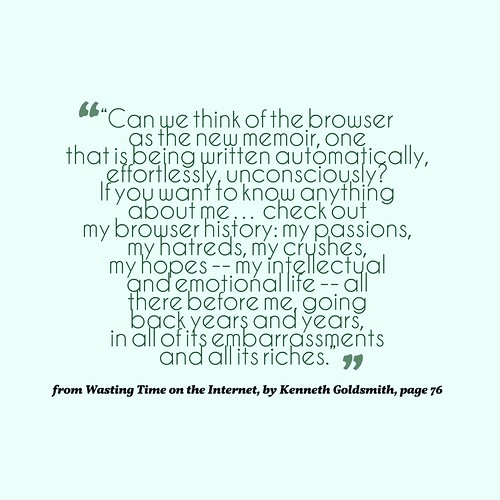 This examination of our web browser as personal memoir stunned me, for all the right reasons. For surely, it is, right? Or at least, it becomes a memoir of our online lives. Can we curate that? Should we curate that? Do we even wonder why our browsers track our history and what becomes of those trails? I wonder, is there a way to shape our browser history into a story or narrative? What would that look like and how would you approach it?
This examination of our web browser as personal memoir stunned me, for all the right reasons. For surely, it is, right? Or at least, it becomes a memoir of our online lives. Can we curate that? Should we curate that? Do we even wonder why our browsers track our history and what becomes of those trails? I wonder, is there a way to shape our browser history into a story or narrative? What would that look like and how would you approach it?
 Back to the question of curation. To stem the onslaught of information and data, we have to find better ways of making sense of it all (signal to noise and back again). The “larger vision” is the story we tell of ourselves, now, and how we will remember the story of us, then.
Back to the question of curation. To stem the onslaught of information and data, we have to find better ways of making sense of it all (signal to noise and back again). The “larger vision” is the story we tell of ourselves, now, and how we will remember the story of us, then.
 We had just explored animated GIFs in CLMOOC so this section in which Goldsmith dives into the GIF world was interesting. His observation of GIFs as small silent movies, telling a story with gaps in the narrative, set into a looping pattern, expresses much of what we in CLMOOC were exploring, too. How to move the GIF from just funny visual meme into something larger? That’s a worth exploration.
We had just explored animated GIFs in CLMOOC so this section in which Goldsmith dives into the GIF world was interesting. His observation of GIFs as small silent movies, telling a story with gaps in the narrative, set into a looping pattern, expresses much of what we in CLMOOC were exploring, too. How to move the GIF from just funny visual meme into something larger? That’s a worth exploration.
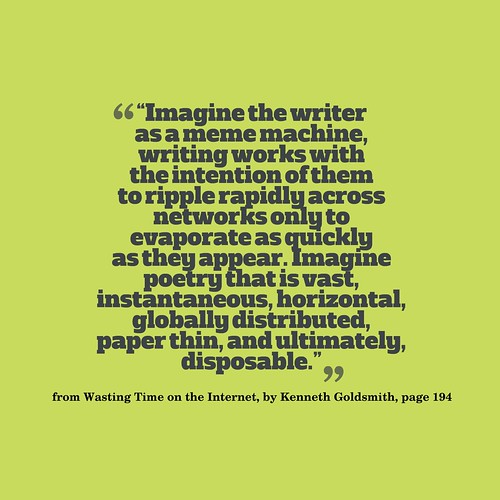 Yeah. Imagine that. A recent conversation about using Mastodon, where I join others in writing small texts on a regular basis, centered on this “writer as meme machine” because we talked about the disappearing texts. Not as something to mourn but as something to perhaps celebrate for the way they come and go and remain in memory, if not on the page. As a writer of this “short form” writing, every word and every sentence has to have some resonance. There is no wasted space.
Yeah. Imagine that. A recent conversation about using Mastodon, where I join others in writing small texts on a regular basis, centered on this “writer as meme machine” because we talked about the disappearing texts. Not as something to mourn but as something to perhaps celebrate for the way they come and go and remain in memory, if not on the page. As a writer of this “short form” writing, every word and every sentence has to have some resonance. There is no wasted space.
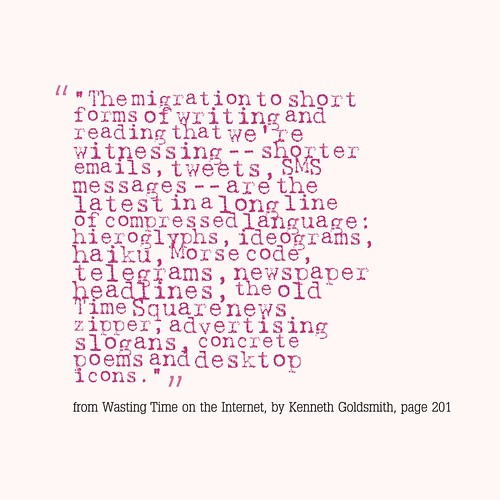 And this, too. Nothing new is happening here. Just a new platform. Good to remember.
And this, too. Nothing new is happening here. Just a new platform. Good to remember.
 Goldsmith ends his book with a reminder that what seems to be inattention or what seems to be zombie-like connection to the screen may, in fact, be something more, something deeper than appears at first glance. I agree, yet fall back into the “get off that screen” when I see my kids hunched over their iPod or phone.
Goldsmith ends his book with a reminder that what seems to be inattention or what seems to be zombie-like connection to the screen may, in fact, be something more, something deeper than appears at first glance. I agree, yet fall back into the “get off that screen” when I see my kids hunched over their iPod or phone.
Finally, for the very last chapter of the book, Goldsmith includes a list of 101 Ways to Waste Your Time on the Internet, via a crowdsourcing endeavor with his college students. I pulled some that I thought were worth remembering (I am curating!) and decided to dump them into an app that animates text. Notice how all of the words got mashed together. The app couldn’t handle the flow. The smashing of words was not planned but amusing just the same.

Peace (time),
Kevin
